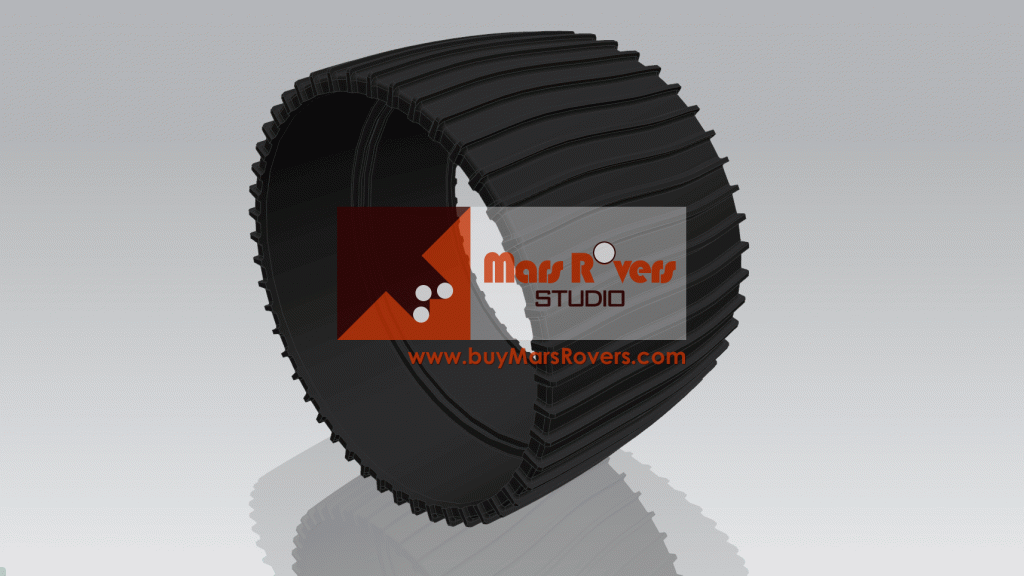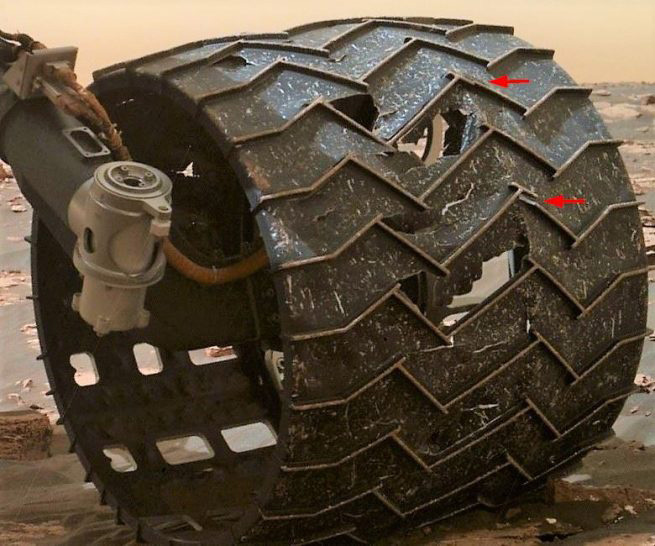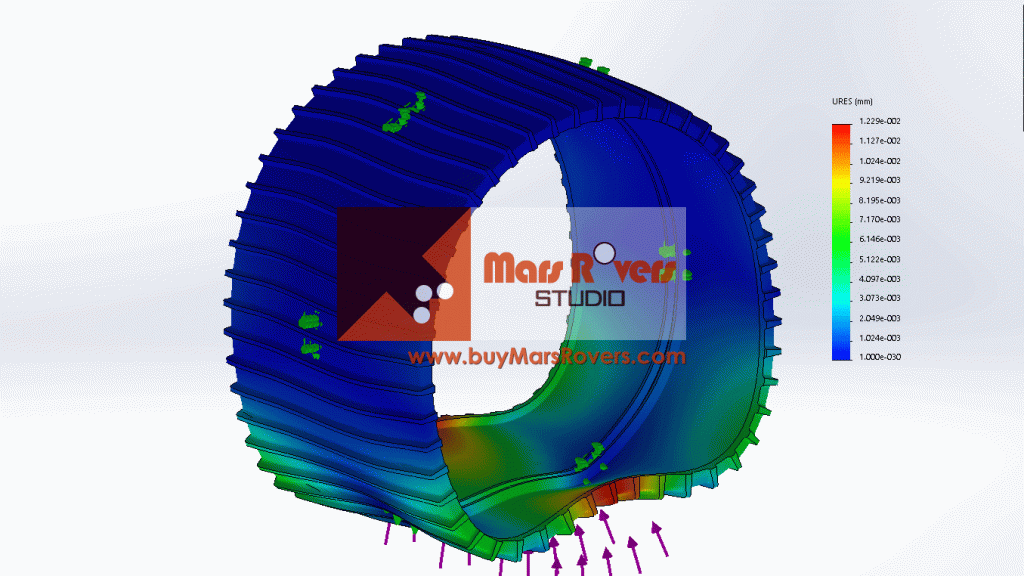The Mars 2020 Perseverance rover has 6 wheels. Different from its predecessor, each of the Mars 2020 Perseverance rover‘s wheels has a total of 48 gently curved treads instead of 24 chevron-patterned treads. For the wheels of our Perseverance Mars Rover Replica, all the curved treads will be perfectly replicated.
Other than changing the wheel patterns, the Mars 2020 Perseverance rover‘s wheels are around 8.5mm thick, which is around 1mm thicker than the Curiosity rover, not including the pattern thickness on the wheel surface. Proportionally, the thickness of our 1:2 Perseverance Mars Rover Replica‘s wheel should be 1mm, but in order for the wheels to be strong enough to support the rover body and the loads onboard and bear the rocky terrain, we will make the thickness of the Mars Rover Replica‘s wheel 2 mm.
The diameter of the Mars 2020 Perseverance rover‘s wheels is 52.5 centimeters or 20.7 inches, which is a little bit larger than the Curiosity Mars Rover’s 50.8-centimeter or 20-inch wheels. The diameter of the wheels of our 1:2 Perseverance Mars Rover Replica is 26.25 centimeters or 10.35 inches.
The reason to change the tire pattern and to make the Mars 2020 Perseverance rover‘s wheels thicker is due to the wear and tear that the Curiosity Mars rover’s wheels experienced. And this actually affects Curiosity’s performance on the Martian sand. But now with the new design, the Mars 2020 Perseverance rover‘s wheels are more resistant to the harsh Martian surface condition. The wheels of our 1:2 Mars Perseverance Rover Replica are strong enough as well to survive many kinds of rock terrains.
While the spokes of the wheel were made of titanium, the PMars 2020 Perseverance rover‘s tires were machined from aluminum that is widely used in the airplane industry, and it is a type of shape memory alloys. This shape-memory aluminum allows the tires to adapt to the Martian terrain, which is very much like a shock absorption system to provide the Mars 2020 Perseverance rover with a stable ride and minimize damages to the tires and hence to the instruments carried by the rover. The shape-shifting material makes the Mars 2020 Perseverance rover‘s tires light-weight, more durable and they have better traction performance while driving on the Martian rocky roads. For our 1:2 Mars Rover Replica, the spokes are made of aluminum and the wheel surface is made of steel. The reason we choose these two materials to build our Mars Rover Replica is explained in this post [Designing the Perseverance Mars Rover Replica’s Wheels].
With one full turn of the wheels, the Mars 2020 Perseverance rover can move forward a distance of 1.65 meters, or 65 inches. The Perseverance Mars rover can go as fast as 152 m/h, or 4.2 cm/s, which might not seem very fast compared to Earth’s vehicles, but the slow speed actually helps the Perseverance Mars Rover conserve energy for the long-term mission. In terms of our Mars Rover Replica, how fast it can go is still to be determined, but we will try to match the Mars 2020 Perseverance rover‘s speed.
Compared with the Curiosity Mar rover, the Mars 2020 Perseverance rover is much more autonomous in terms of driving. The software onboard allows the Mars 2020 Perseverance rover to decide which way it wants to go, which means the Mars 2020 Perseverance rover will travel much further without having to confirm with Earth each time about the driving paths. For our 1:2 Perseverance Mars Rover Replica, you will remotely control it with screens showing real-time video captured by the cameras mounted around the body of the Mars rover replica.
The Mars 2020 Perseverance rover‘s wheels work with a Rocker-Bogie suspension system when interacting with the surface of Mars. This Rocker-Bogie design allows the Mars 2020 Perseverance rover to go over obstacles twice the height of the wheel and allows the loads onboard evenly distributed on the 6 wheels. In our 1:2 Mars Rover Replica, the Rocker-Bogie feature is perfectly replicated, so you can expect that our Mars Rover Replica will also be able to drive over obstacles that are twice the height of its wheels and have the loads evenly distributed on 6 wheels.
Synonyms: cleats, raised treads, grousers




